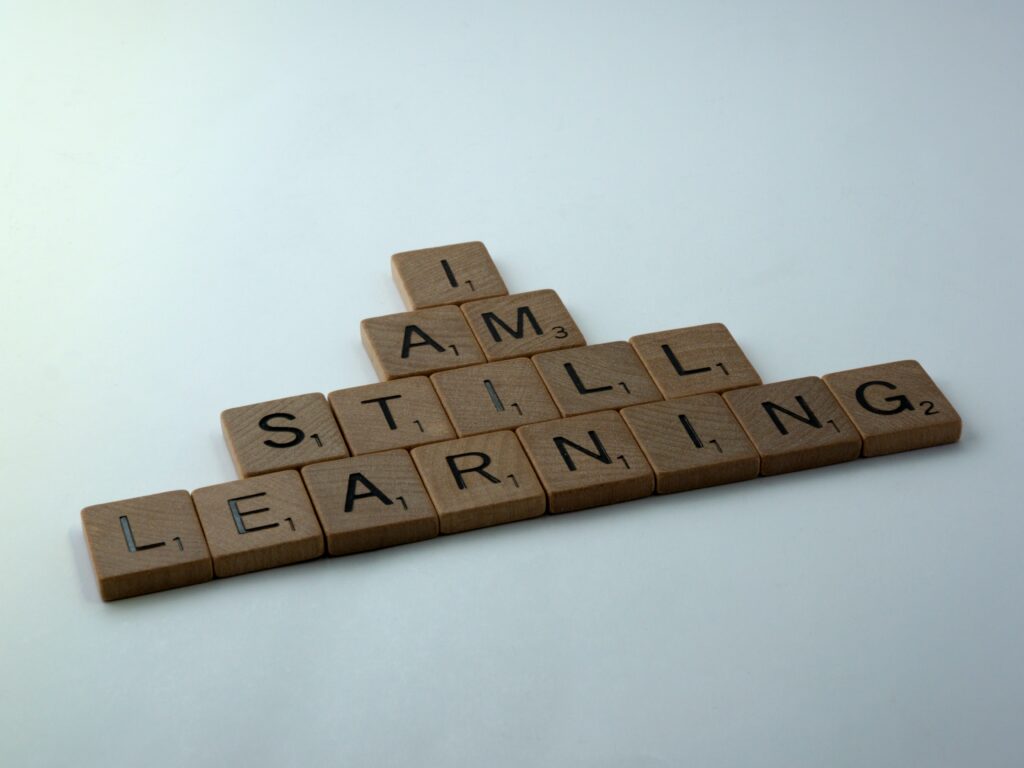Unlocking and Navigating the Journey for Language Enthusiasts, Learners, and Teachers.
Language learning is a fascinating yet challenging journey that requires dedication, commitment, and the right methods. Whether you’re a language enthusiast eager to explore a new linguistic landscape or a seasoned teacher guiding others on this path, it’s crucial to recognize and address common pitfalls in learning methods. In this blog post, we’ll delve into the issues surrounding ineffective learning methods and explore solutions for both learners and educators.
Here are multiple Solutions to Problems that Stop Effective Learning:
1. Lack of Quality Content
The Problem: Quantity Over Quality
One prevalent issue is the overwhelming emphasis on quantity rather than quality when it comes to learning resources. Learners often drown in a sea of vocabulary lists and grammar rules without truly understanding the context or cultural nuances.
Solution: Embrace Engaging Content
Quality content is key. Encourage learners to explore authentic materials like books, movies, and podcasts in the target language. For teachers, incorporating culturally relevant content into lessons fosters a deeper connection to the language.
2. Inconsistent Practice
The Problem: Stop-and-Start Learning
Many language learners struggle with consistency. Life’s demands often lead to sporadic study sessions, hindering the development of a steady language-learning routine.
Solution: Establish Daily Habits
Consistency is paramount. Encourage learners to set aside dedicated time each day for language practice. Teachers can help by providing structured lesson plans and homework assignments that promote daily engagement.
3. Overemphasis on Memorization
The Problem: Rote Learning Without Context
Traditional methods often prioritize memorization of vocabulary and grammar rules without providing a meaningful context. This can result in learners feeling disconnected from the language.
Solution: Contextual Learning
Shift the focus from rote memorization to contextual learning. Use real-life scenarios and practical examples to reinforce vocabulary and grammar concepts. Immersive experiences, such as language exchanges or virtual trips, can also enhance understanding.
Here is a short helpful Video: https://www.youtube.com/watch?v=FatnXnlwAc4
4. Neglecting Speaking and Listening Skills
The Problem: Silent Learning
Some learners may be proficient in reading and writing but struggle when it comes to speaking and listening. Traditional classroom settings often prioritize written communication.
Solution: Interactive Conversations
Prioritize interactive activities that emphasize speaking and listening. Language exchange partnerships, conversation clubs, and interactive classroom exercises can significantly improve oral communication skills.
5. Insufficient Cultural Integration
The Problem: Cultural Disconnect
Language is deeply intertwined with culture, yet many language learners miss out on this crucial aspect. A lack of cultural integration can lead to misunderstandings and hinder overall language proficiency.
Solution: Cultural Immersion
Incorporate cultural elements into language lessons. Explore traditions, customs, and idioms unique to the target language. Virtual cultural experiences, such as online tours or guest speakers, can enrich the learning process.
Ineffective Learning In General: Building a Foundation for Lifelong Learning
By addressing these common issues, language enthusiasts, learners, and teachers can pave the way for a more effective and enjoyable language-learning experience. Quality content, consistency, contextual learning, emphasis on speaking and listening skills, and cultural integration together form the foundation for a lifelong journey of language exploration.

Remember, language learning is not just about reaching a destination; it’s about embracing the journey. Through thoughtful methods and continuous improvement, learners and educators can navigate the intricate paths of language acquisition with confidence and success.
Here is a Step-by-Step Guide for Overcoming Pronunciation Challenges:
The Problem of Pronunciation Roadblocks
One common hurdle language learners face is the difficulty in mastering pronunciation. Accurate pronunciation is crucial for effective communication, yet many struggle to replicate the sounds of a new language.
Step 1: Phonetics Primer
Begin by familiarizing yourself with the phonetic sounds of the language. Online resources and apps often provide audio samples of native speakers, helping you understand the nuances of pronunciation.
Step 2: Mimic Native Speakers
Immerse yourself in authentic conversations. Mimic the pronunciation, rhythm, and intonation of native speakers. Repetition is key, so don’t hesitate to rewind and practice specific phrases until they become second nature.
Step 3: Try Tongue Twisters and Challenges
Engage in tongue twisters and pronunciation challenges. These playful exercises not only make learning enjoyable but also help train your tongue and vocal cords to produce unfamiliar sounds.
Step 4: Use Speech Recognition Tools
Leverage technology. Speech recognition tools and language learning apps can provide instant feedback on your pronunciation, helping you identify areas for improvement.
Step 5: Native Speaker Feedback
Seek feedback from native speakers or language exchange partners. Online language forums and communities can connect you with speakers willing to offer constructive criticism and valuable insights.
Pronunciation Blocks In General: Take a Journey to Fluency.
Mastering pronunciation is a melodic journey that adds a harmonious layer to your language learning experience. By following this step-by-step guide and embracing the art of mimicry, you can turn pronunciation challenges into opportunities for growth and fluency.

Remember, each language has its own unique cadence and rhythm. Embrace the beauty of these linguistic nuances, and let the journey of mastering pronunciation be a symphony of progress and achievement in your language learning adventure.
Navigating Language Anxiety: How to apply the learned.
The Problem of general Language Anxiety
Language anxiety is a pervasive challenge that can impede the learning process. The fear of making mistakes, being misunderstood, or not reaching a certain proficiency level can create mental barriers, hindering learners from fully engaging with the language.
Learn more here: Language Anxiety and 7 Proven Strategies to Overcome it.
Solution: Cultivating a Positive Mindset
Step 1: Embrace Imperfection
Acknowledge that making mistakes is an integral part of the learning journey. Instead of fearing errors, view them as stepping stones toward improvement. Every misstep is an opportunity to refine your skills.
Step 2: Create a Supportive Environment
Surround yourself with positivity. Engage with fellow language enthusiasts, join supportive online communities, or participate in language exchange groups. You can join our community for relevant and a fresh insights here: https://besser-formuliert.com/register/.
Sharing experiences and challenges with like-minded individuals can alleviate anxiety.
Step 3: Set Realistic Goals
Establish achievable and realistic language learning goals. Break down larger objectives into smaller, manageable tasks. Celebrate small victories along the way, reinforcing a positive mindset.

Use our Checklist for Overcoming Language Anxiety:
Use this checklist to ensure you’re on the right track in overcoming language anxiety:
☐ Mindful Breathing: Practice deep breathing exercises to center yourself during moments of anxiety.
☐ Positive Affirmations: Create a list of positive affirmations related to language learning. Repeat them regularly to boost confidence.
☐ Daily Reflection: Take a few minutes each day to reflect on your language learning journey. Acknowledge achievements and identify areas for improvement without self-judgment.
☐ Support Network: Build a support network of fellow language learners or mentors who understand the challenges and can offer encouragement. Or join our Newsletter so you also receive new Language Related Reports.
☐ Gratitude Journaling: Keep a gratitude journal specifically for language learning. Document positive experiences, breakthroughs, or interesting cultural discoveries.
☐ Variety in Learning: Incorporate diverse learning methods to keep the process engaging. Experiment with different resources, such as podcasts, movies, and games and tools.
Click here to see helpful Language Tools.
☐ Mindfulness Techniques: Integrate mindfulness techniques, such as meditation, to stay present and focused during language learning sessions.
☐ Regular Breaks: Avoid burnout by taking regular breaks. Step away from your studies when needed, allowing your mind to recharge.
☐ Self-Compassion: Be kind to yourself. Understand that language learning is a gradual process, and everyone progresses at their own pace.
☐ Celebrate Progress: Celebrate milestones and progress, whether big or small. Reward yourself for the dedication and effort invested in your language journey.

Language Anxiety In General: Flourishing Amidst Challenges
By cultivating a positive mindset and incorporating these actionable steps into your language learning routine, you can navigate and conquer language anxiety. Remember, the joy of learning a new language lies in the journey itself, and each step forward is a testament to your resilience and commitment.
 Want to learn more about Language Anxiety? Click here and read a specific Blog-Post.
Want to learn more about Language Anxiety? Click here and read a specific Blog-Post.






